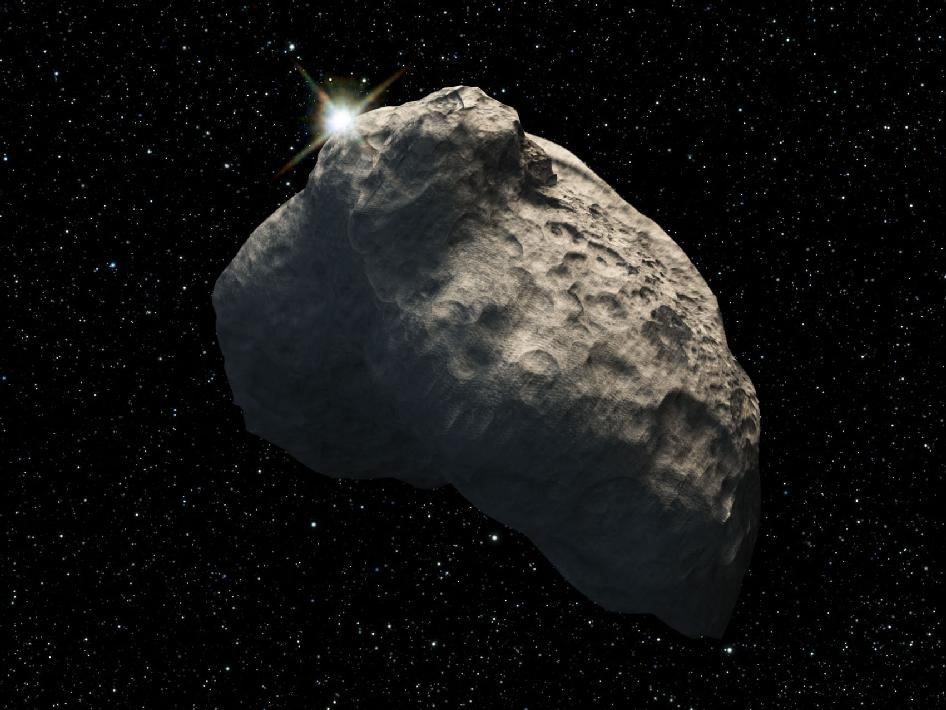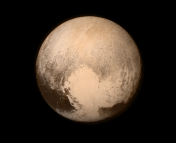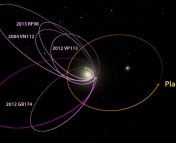Title: Impact Craters on Pluto and Charon Indicate a Deficit of Small Kuiper Belt Objects
Authors: K. N. Singer, W. B. McKinnon, B. Gladman, et al., including the New Horizons team
First Author’s Institution: Southwest Research Institute, Boulder, CO.
Status: Published in Science, open access on arXiv
The population of small objects in the Kuiper Belt is of interest because these are the last surviving remnants of the disk from which the Solar System formed. Clues to the processes that govern how planets grow and evolve are hidden among the objects beyond Neptune, yet the composition of the Kuiper Belt is largely unknown. Specifically, astronomers want to determine the size-frequency distribution of Kuiper Belt Objects (KBOs)—how many objects of each size there are—to infer the dominant planetary
system dynamics over billions of years.
The larger KBOs, including Pluto, can be observed from ground-based telescopes, but KBOs smaller than a few kilometers in diameter are nearly impossible to detect. Without being able to sample the Kuiper Belt, it is a challenge for astronomers to determine the distribution of KBOs. New Horizons provided a unique opportunity to study the Kuiper Belt when it successfully flew past Pluto and Charon in 2015, returning the first high resolution images ever.
Count the Craters
The authors start by characterizing the distribution of craters on the surfaces of Pluto and Charon by counting every possible crater visible in the New Horizons images. A sampling of images of Charon are shown in Figure 1.
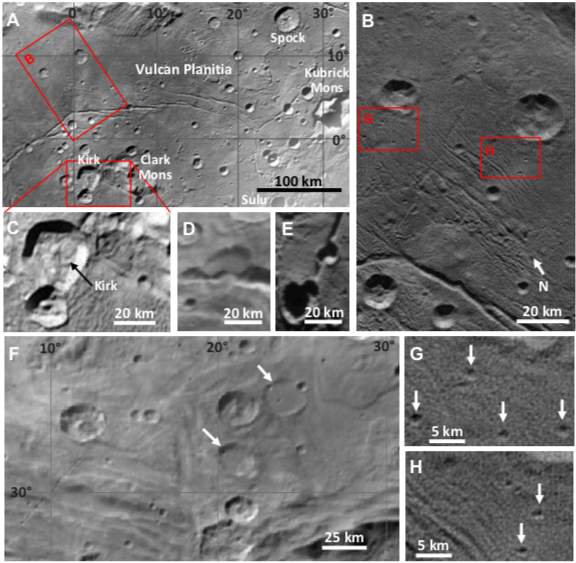
Theory predicts that larger KBOs are far less common, so there should be far fewer large craters than small craters. The relative crater and KBO distribution is given by a number q, which theory predicts should be around -3.
A higher q (e.g., q = -2) means fewer small objects than expected and a lower q (e.g., q = – 4) means more small objects than expected. Typically the distributions are plotted in such a way that q = -3 is a flat slope, q = -2 is a positive slope and q = -4 is a negative slope. The upper left corner of Figure 2 below shows how different q values appear in the data.
Significant deviations from q = -3 constitutes a very different distribution of KBOs, which would change the picture of how the outer Solar System evolved over billions of years.
A Surprising Result
The authors find the distribution of larger craters on Pluto and Charon follows a slope of q = -3, but the distribution of craters less than 13 kilometers in diameter follows a slope of q = -1.7. This means there are still more smaller craters than larger ones, but there are fewer small ones than they expect. This result is shown in Figure 2, where the slope is flat (q = -3) for craters larger than 13 km but slopes down and to the left (q = -1.7) for smaller craters.

Naturally, the authors look for any geological processes that could wipe away small craters. They consider how tectonic activity, glacial erosion, atmospheric activity, and volcanism might remove craters but ultimately rule out these possibilities. Furthermore, the 13 kilometer change in q is about the same on both Pluto and Charon, so it is unlikely to be caused by chance. Fewer small craters means a deficit of small KBOs.
Looking Back in Time
It is believed that a 13 kilometer crater is caused by a 1-2 kilometer object, so the deficit of small KBOs applies to objects smaller than about 1 kilometer in diameter. The authors would like to do observational follow-up but objects this small that far away are simply too faint to see from Earth. Instead, they turn to modeling.
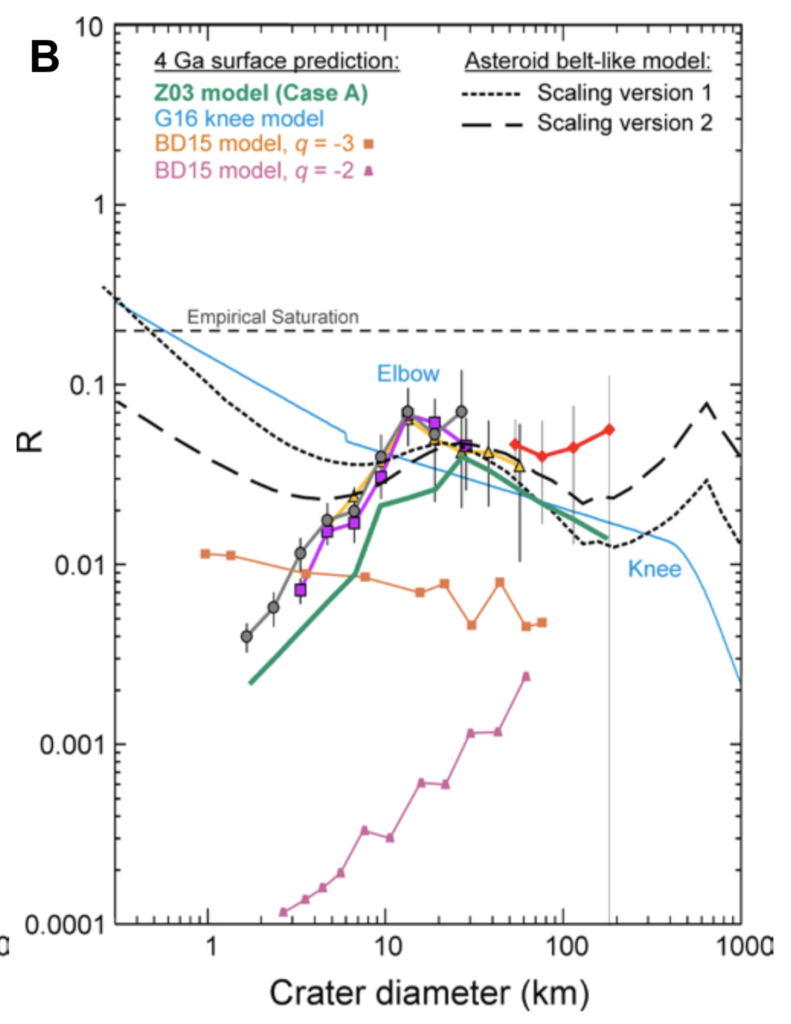
The authors compare the crater data to many different distribution models, which are shown in Figure 3. Of all the data in Figure 3, the most important feature is how the yellow, grey, and purple dots (the crater data from Figure 2) follow the green line and no other model. The model in green is based on craters from Jupiter’s moons, so the fact that Jupiter’s moons match craters on Pluto and Charon leads the authors to conclude all these craters are nearly as old as the Solar System itself. We are looking at 4 billion year old craters!
Implications on Planet Formation
The paper’s primary finding—that there is a deficit of old craters on Pluto and Charon— indicates the early Solar System likely had far fewer small objects than predicted, which offers some constraints on how the planets formed. Two primary processes occur in planet formation: collision of larger objects creates smaller ones, and gravitational attraction of smaller objects creates larger ones. The authors concludes that if their data is correct, gravitational growth is more dominant for objects smaller than 1 kilometer than for objects larger than 1 kilometer. 3/4 The New Horizons crater data of Pluto and Charon offers a brand new take on the delicate and enigmatic process of planetary system formation, which may even help understand how other planetary systems evolve.


